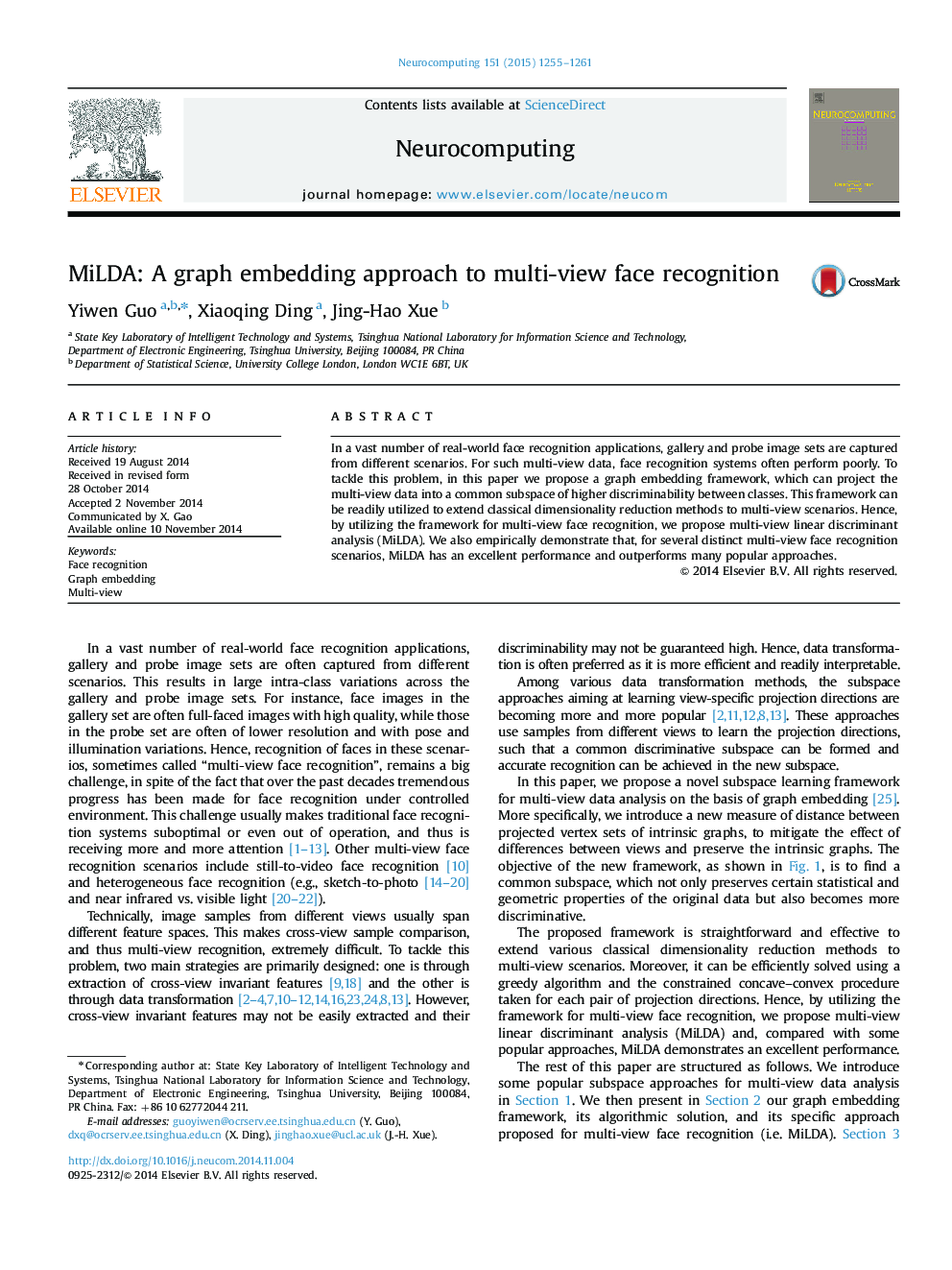| Article ID | Journal | Published Year | Pages | File Type |
|---|---|---|---|---|
| 409626 | Neurocomputing | 2015 | 7 Pages |
In a vast number of real-world face recognition applications, gallery and probe image sets are captured from different scenarios. For such multi-view data, face recognition systems often perform poorly. To tackle this problem, in this paper we propose a graph embedding framework, which can project the multi-view data into a common subspace of higher discriminability between classes. This framework can be readily utilized to extend classical dimensionality reduction methods to multi-view scenarios. Hence, by utilizing the framework for multi-view face recognition, we propose multi-view linear discriminant analysis (MiLDA). We also empirically demonstrate that, for several distinct multi-view face recognition scenarios, MiLDA has an excellent performance and outperforms many popular approaches.
